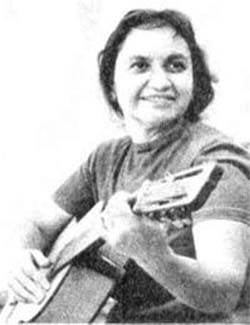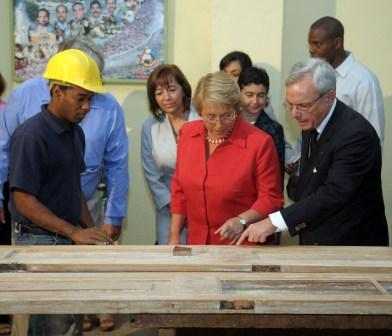Gracias a la Vida
ALFREDO PRIETO*

HAVANA TIMES, February 20 – After Mexico, the Latin American country with the greatest and deepest cultural ties with Cuba is probably Chile. That relationship, like all others, has its history. It was particularly intense during the government of Salvador Allende (1970-1973), when for the first time an electoral process brought a left-wing candidate to the presidency, a foreshadowing of events that would unfold in the region many years later.
The Chilean experience put to the test one of the most burning political debates of the 1960s: the pertinence or not of the armed struggle as a means to power, especially after the failure of Che’s Bolivian guerrilla struggle and the unsuccessful effort to convert the Andes into the Sierra Maestra of South America.
In Havana during the 70s there was a kind of fervor for everything Chilean, from the wine we called Don Balta, so enthusiastically consumed by the population, to the influence in literary circles of the so called anti-poetry of Nicanor Parra, a movement against the verbal cathedrals of Pablo Neruda that was adopted with enthusiasm by the young Cuban poets of the time.
Starting with the Protest Song Festival, organized by the Casa de las Americas Cultural Institution at the end of the 60s, the presence of Angel and Isabel Parra and the songs of Violeta, became common occurrences in Cuba, along with the presence of singer/composer Victor Jara.

Omara Portuondo’s interpretation of Violeta Parra’s “Gracias a la vida” (Thanks to life) instilled in the popular imagination one of the most beautiful Latin American songs of all time. The amateur music festivals of the Federation of University Students (FEU) inspired groups that followed the path of Chilean folk groups like Inti-Illimani and Quilapayun. Not only did they play typical Andean instruments never before used by Cuban musicians, but they also sported ponchos impossible to wear in the hot tropical sun of the free concerts in the plazas without paying with sweat the price of being in fashion.
After the coup d’etat (9/11/73) the relationship entered on a more even plane with the presence of Chilean exiles in Alamar, a suburb on the east side of the capital. First conceived as an emergency plan to resolve the eternal housing problem via micro-construction brigades, Alamar allowed the Cubans and Chileans to get to know the pros and cons of each culture through the logic of contact.
Cubans and Chileans saw their similarities and differences interacting in their daily lives, to the extent that it was not surprising that mixed couples and inter-cultural marriages occurred.

In their parties roast pork and rum often mixed with empanadas and wine, although abundance was never a hallmark of Cuban society. The limitations that existed in Cuba was one of the reasons that led the exiles to gradually depart towards other latitudes of the planet even before the beginning of the severe Cuban economic crisis of the early 1990s.
Meanwhile, the Movimiento de Izquierda Revolucionaria (MIR) and its membership were for many Cubans a kind of alter ego, although officially the Cuban government favored what would be the Achilles heel of the Chilean process: unity in the face of divergence regarding the path to take to defeat a dictatorship supported by Washington, and the local oligarchy that tortured or assassinated thousands of persons indiscriminately, a national trauma still alive and with long-term consequences. .
It wasn’t a matter of Cuban intrusion in Chilean internal affairs, but rather of chosen affinities stemming above all from a community of ideology, methods and procedures.
These things, and others that I omit here for reasons of space, underline the appropriateness of Chile being the guest of honor at this year’s International Book Fair in Havana. The fair was inaugurated on February 12 in the presence of Chilean President Bachelet at the San Carlos de La Cabaña Fortress. It’s a thanks to life that no campaign could lacerate because the Chilean-Cuban connection has been marked indelibly, like that of “el musguito en la hiedra.” [line from a Violeta Parra song, referring to the intertwining of moss and ivy.]
*Cuban essayist and editor who lives in Havana.





